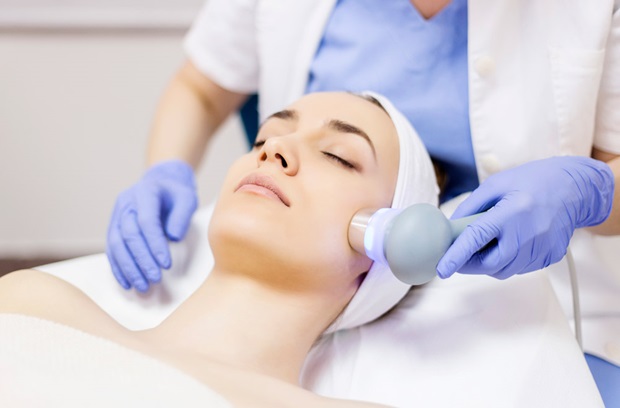What Does Laser Skin Treatments Mean?
Table of ContentsLaser Skin Treatments for BeginnersLaser Skin Treatments Can Be Fun For EveryoneLittle Known Facts About Laser Skin Treatments.The Facts About Laser Skin Treatments UncoveredLaser Skin Treatments Things To Know Before You BuyGetting My Laser Skin Treatments To Work
Any individual that wishes to make changes to his or her skin can be a prospect for laser skin resurfacing. The energy component of the laser is targeted towards the pigment, or color, in your skin and blood vessels. This is why darker-skinned individuals with more melanin in their skin need to be much more careful as aggressive laser therapies might inadvertently overtreat the skin, producing troubles.
The heat and the removal of the skin also stimulates the development of brand-new, younger looking skin cells. There is additionally a less intensive procedure in which the laser merely warms up the skin, as opposed to actually removing the outer layer. The warmth boosts the skin cells which enlarge your collagen.
What Does Laser Skin Treatments Do?
After the treatment, your treated locations will certainly be treated and wrapped to guarantee a timely healing. There are several benefits to laser skin resurfacing, yet the 3 most significant advantages are: The very first benefit of skin resurfacing is that the treatment is easy and quick. It generally just lasts in between thirty and forty-five mins, relying on what you require done.

Inevitably, the factor you undergo the laser skin resurfacing procedure is to get rid of any kind of troubles with your skin to make sure that your skin looks fantastic. Resurfacing can give you the most reliable outcomes for this. Unlike base and skin care creams, this treatment will really permanently alter your skin, removing anything unwanted to provide you the results you are looking for.
Getting The Laser Skin Treatments To Work
By eliminating the outer layer of skin, your wrinkles will certainly not have actually been briefly tightened, or loaded, yet they will have been entirely removed! This suggests that your skin itself looks amazing, and it does not need to be concealed by a countless series of items. Laser Skin Treatments. Because the leading layer of skin is eliminated, completely brand-new skin will certainly replace it
It has not experienced the damages of that skin, and looks vibrant because it is younger! This treatment essentially offers you new, more youthful skin. The heat from the laser stimulates your skin cells which consequently enlarge your collagen. Collagen is the healthy protein which provides your body toughness and structure.
This is probably the biggest advantage of laser skin resurfacing. Your new looks are never short-term. The procedure is lasting and the excellent outcomes will certainly not discolor over night like so lots of various other skincare solutions. Unlike with facial creams or bases, with resurfacing, the outcomes are irreversible. You have a new layer of skin and the scars and blemishes of your former skin will certainly not return.
The Ultimate Guide To Laser Skin Treatments
:max_bytes(150000):strip_icc()/Leah-fraxel-Recirc-df8d0a6b9c754d829878a38400112441.jpg)
Historically, a lot of laser research concentrated on ablative lasers, which Read More Here eliminate part of the epidermis. While efficient, Richey noted the disadvantages and stated, "It's a painful treatment. You need extra downtime off of work, and because you're removing pieces of the skin, it can cause sort of pigmentary issues, and you can have some scarring." According to Richey, a significant advancement in this field is the change towards non-ablative fractional lasers.
The 2 main wavelengths made use of in these lasers are the 1927 nanometer and the 1550 nanometer fractional non-ablative lasers. Both lasers have actually revealed efficiency in avoiding skin cancers cells while boosting overall skin appearance and health and wellness.
About Laser Skin Treatments
IGF is anti-carcinogenic, so we believe perhaps that's one of the mechanisms through which the laser protects against skin cancers cells, however it also assists your overall skin wellness. That, blended with this heating of your skin that produces an injury recovery action may imply that your skin is much better at recovery, however we can't truly say that definitively right currently."The effectiveness of non-ablative fractional lasers in diverse skin types is another important benefit.
4 Talking about the future of laser therapies i was reading this in dermatology, Richey revealed optimism concerning their role in protecting against skin cancer cells. "In the most current research studies, and this mainly appeared of Matt Abram and Brian Hibler over at Mass Gen, they discovered that the individuals that got even just 1 of these non-ablative, fractional laser treatments were half as most likely as their counterparts to get one more skin cancer cells over a 6-year period," she shared.
Laser Skin Treatments Fundamentals Explained
"I would not always at this factor use lasers to treat what we understand is a skin cancer cells on a person's face, however I do believe that day is coming," she said. In the meantime, conventional techniques like Mohs surgery stay the gold criterion for higher-risk tumors and those located on essential areas such as the face or hands."I see [non-ablative fractional lasers] as playing an outstanding function in terms of skin cancer cells avoidance.
The Cosmetic surgeon General's telephone call to action to protect against skin cancer more information cells. Skin Cancer Cells as a Major Public Health And Wellness Problem. Nonablative 1927 nm fractional resurfacing for the treatment of face photopigmentation.
2014; 13( 11 ):1317 -1322. Friedman P, Chapas A, Kilmer S, et al. Optimizing End results With the 1550/1927 nm Dual Wavelength Non-Ablative Fractional Laser: Experienced Customer Recommendations. J Drugs Dermatol. 2021; 20( 11 ):1150 -1157. doi:10.36849/ jdd. 6181Gupta AK, Bharadwaj M, Mehrotra R. Skin Cancer Cells Concerns in People of Shade: Risk Aspects and Prevention. Oriental Pac J Cancer Prev. 2016; 17( 12 ):5257 -5264.